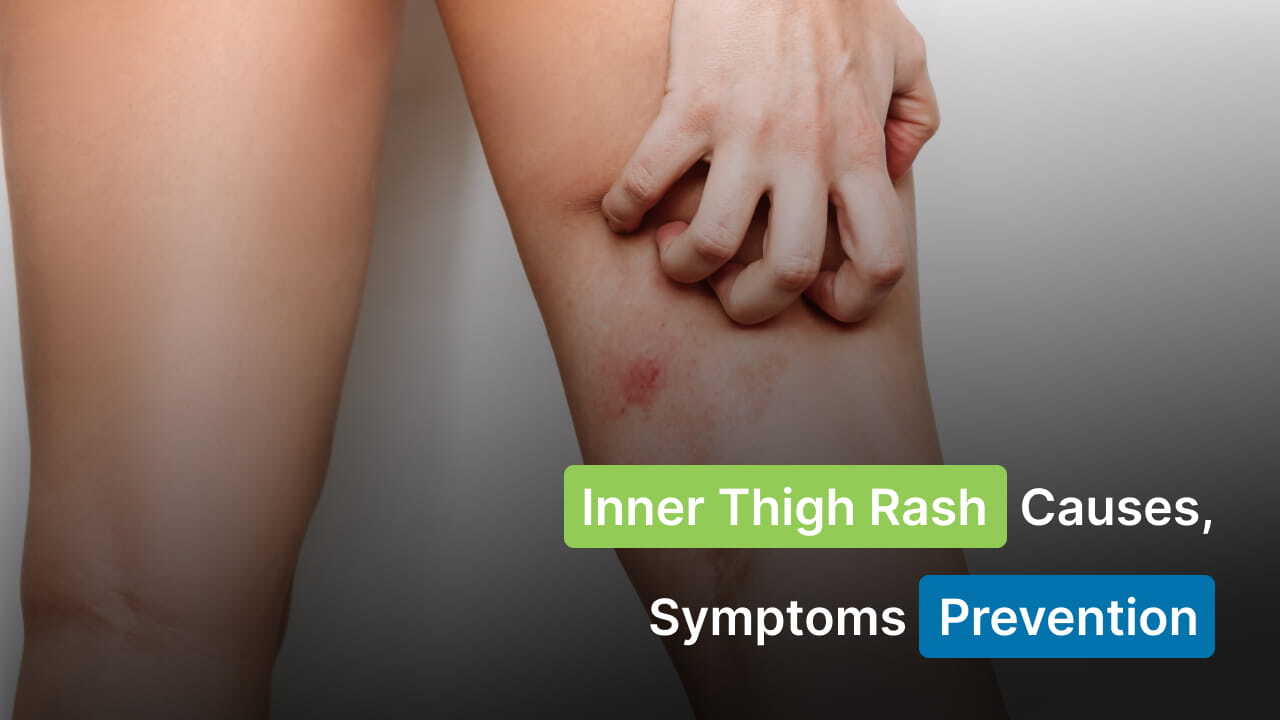
Cryoablation is a modern medical treatment method that has gained immense popularity lately. This minimally invasive technique uses extremely low temperatures to target and destroy (ablate) tumors or abnormal tissues.
Earlier, people used a conventional method to remove a tumor, which was through painful surgery. However, with the advent of technology in the last decades, a new approach has emerged, which is known as cryoablation.
Read this blog to learn more about cryoablation, how it works, its types, its benefits, and the potential risks associated with it.
What is Cryoablation?
Cryoablation is a nonsurgical, localized method for killing cancerous tumor cells by freezing them while sparing healthy tissue. The tumors of bone, kidney, lung, and liver can be treated with cryoablation therapy.
Usually, there are three types of cryoablation:
- Topical cryoablation – Surface of the skin
- Percutaneous cryosurgery – Inside the body via a small hole
- Surgical cryotherapy – Inside the body through a larger incision or cut
Cryoablation is not just used in the treatment of cancer but also in several other diseases, including:
- Intensive skin diseases such as warts, skin tags, actinic keratosis
- Atrial fibrillation
- Arrhythmia (abnormal heart rate and rhythm)
- Precancerous cells in the cervix
- Breast Cancer
You May Also Like: You Probably Eat These 9 Cancer-Causing Foods Every Day!
How Does Cryoablation Work?
Cryoablation, also known as cryotherapy or cryosurgery, is a modern medical procedure that involves the use of extreme cold temperatures (-80°C) to treat numerous medical conditions, especially cancer.
It works by freezing targeted tissues, causing cell destruction and subsequent removal.
The cold-freezing agent could be liquid nitrogen, compressed argon gas, or liquid nitrous oxide.
Cryoablation surgery is usually performed by an expert interventional radiologist in collaboration with other healthcare experts.
Here, a small needle-like tool called a cryoprobe is inserted into the affected area, and temperatures as low as -80°C are used to freeze and destroy the unwanted tissue.
In the case of cancer treatment, the cryoprobe is inserted into the desired area through the skin or via a scope. The cryoprobe contains extremely cold gas called freezing agents, such as:
- Liquid nitrogen (LN2)
- Liquid nitrous oxide (LN2O)
- Compressed argon gas (Ar)
When inside the body, the radiologist finds the affected area with the help of imaging technology such as MRI or CT scans. These freezing agents are then sprayed over the cancerous cells or a tumor. The intense cold at the tip of the applicator (cryoprobe) freezes and forms an iceball around the targeted tissue.
It then kills the abnormal or cancerous tissue. This can be performed more than once for more effective results.
After the procedure is completed, the doctor safely takes out the cryoprobe after warming it and closes the opening if required. If the cancer is deep inside the organ, the doctor might use a laparoscope to view the affected area more clearly.
Before the procedure, the doctor will administer IV anesthetics using an intravenous catheter to numb the area. This will prevent any pain or make you feel relaxed throughout the procedure.
In other ways, they may also apply an anesthetic cream on the skin. It can also be performed on an outpatient basis.
The process is guided by medical imaging techniques like ultrasound or Computed Tomography (CT) to ensure accuracy and minimize damage to the surrounding healthy tissue.
How Long Does Cryoablation Take?
The cryoablation procedure lasts for nearly two to three hours, depending on various factors, such as the size of the tumor and the area being treated.
Since it is less invasive, the recovery time is quicker as compared to other conventional surgeries.
What Are The Benefits And Risks Of Cryoablation?
Cryoablation is the most preferred method for treating cancer since many patients can tolerate it well. Besides, it offers many other benefits, which makes it the go-to treatment choice worldwide, according to doctors and oncologists.
It is one of the most effective treatments to remove various cancer cells permanently and has a high success rate of 90 to 98%.
Benefits of Cryoablation
The advantages of cryoablation are:
- Rapid recovery time with minimal pain compared to other surgical methods
- Cryotherapy is less traumatic than other types of treatment methods.
- It is exceptionally safe, with fewer chances of infection and side effects
- Less damaging to the neighboring healthy tissue
- The treatment is affordable compared to other cancer treatments.
- It uses image guidance with ultrasound methods, enabling the gas (freezing agent) to target exact areas for freezing.
- It can be performed multiple times if required.
- It can be combined with other therapies like chemotherapy, immunotherapy, etc.
Risks Associated with Cryoablation
As with any treatment procedure, particularly in the case of cancer, there are certain risks associated with cryoablation. They are:
- Chances of bleeding during the procedure
- Complications from anesthesia, such as nausea
- Nerve damage is the potential side effect of cryotherapy, which can result in numbness or weakness
- Minor discomfort, redness, or pain surrounding the treatment area
- May develop a small wound infection on the skin
- It may involve exposure to X-ray radiation, which can be harmful.
- Fluid collection in nearby areas, such as lungs
- Accidental damage to the skin or healthy organs
- You may experience muscle spasms for a week or two.
Note that you may barely find these side effects. However, in case of extreme levels of pain or discomfort post-procedure, consult your doctor. They will provide you with medication to help you relieve pain.
Examples of Cryoablation
As explained before, cryoablation is commonly used for treating serious health conditions. Below, we’ll discuss how Cryoblation works for the treatment of AFib, breast cancer, prostate cancer, as well as kidney cancer.
1. Cryoablation for AFib
In recent years, cryoablation for AFib has been adopted as a promising minimally invasive treatment option. Cryoablation helps restore a normal heartbeat by disrupting the abnormal electrical pathways in the heart that cause atrial fibrillation.
It is the most effective medical procedure compared to medication, with a success rate of around 90% for treating atrial fibrillation (AFib).
During cryoablation for AFib, the doctor inserts a thin tube called a catheter through a blood vessel and guides it to the heart.
They inflate a small balloon at the end of the tube with a special gas coolant to freeze the heart tissue, which triggers irregular heartbeat (arrhythmia).
Possible complications include perforation of the heart, bleeding, and narrowing of the pulmonary veins.
2. Cryoablation for Breast Cancer
Cryoablation surgery has been extensively used to treat women with breast cancer.
It is a new hope when it comes to women's breast health and has been more effective for decades, according to the American Association of Breast Surgeons.
Usually, women aged above 18 who have been diagnosed with fibroadenomas or those who find a painful lump in the breast are advised to take up this treatment.
Cryoablation kills the non-cancerous breast tumors called fibroadenomas by freezing them below 170℃. It can be performed in a healthcare clinic under local anesthesia and takes about 90 minutes.
After injecting the cryoprobe with liquid nitrogen, it is inserted through the breast skin and into the abnormal tissue to be removed. The tumor instantly freezes, causing the cells to die.
Here, a freeze-thaw-freeze cycle is done to ensure maximum tumor destruction. During the procedure, the tumor cells are gradually destroyed and replaced with new healthy cells. The cryoprobe is then extracted, and the incision is closed with a band-aid.
After the surgery is finished, you might feel slight pain; however, it can be relieved with some painkillers.
3. Prostate Cryoablation
In the case of prostate cancer, cryoablation is used to kill the cancerous cells by freezing the prostate tissue in men.
During cryoablation, hollow metal probes are inserted through the skin between the anus and scrotum and into the prostate. The probes are guided using transrectal ultrasound (TRUS) imagery.
Argon gasses are passed through the probes and exchanged with helium gasses. This causes a freezing and warming cycle. Then, the frozen and dead tissue thaws and is absorbed by the body naturally.
The doctor carefully watches the ultrasound to ensure that no damage has occurred to nearby healthy tissue.
Cryotherapy is less invasive than surgery and is performed on men with low-risk early-stage prostate cancer if there is no other treatment option. Research has found that prostate cryoablation is successful for around 75 to 90% of men three years after their procedure.
You May Also Like: Top 5 Men’s Health Issues That Should Not Be Ignored
4. Cryoablation For Kidney Cancer
Cryoablation is also used in the treatment of small and early-stage renal cancers. The tumors are usually of the size of about 1.5 inches or four centimeters.
In the case of kidney cancer treatment, cryotherapy is usually performed using a laparoscopic procedure. This means the surgeon makes a few small incisions and uses a small camera attached to an instrument called a laparoscope.
It can also be done percutaneously, where an expert radiologist inserts a needle with cold gas guided by a CT scan and freezes the tumor in the kidney. In this case, you will have tiny cuts on the skin over the kidney.
In the US, cryoablation is extensively used to treat kidney cancer, with roughly 20,000 cases treated annually.
When is Cryotherapy An Option?
Cryotherapy can treat a wide variety of tumors (both benign and malignant), including cancers of the lung, liver, prostate, kidney, breast, bone, and others. So, when is the right time to prefer the cryotherapy option?
The answer is simple. The treatment totally depends on several factors, such as type of tumor, size, location, and how well the tumor is visible under image guidance.
However, in the case of metastatic cancer, cryoablation is used to reduce pain and other symptoms associated with cancer.
When a patient is not suitable for surgical removal of cancerous tissue due to certain reasons such as older age or other coexisting conditions, cryoablation treatment is advised by doctors.
Conclusion
As we can see, cryoablation is a safe and minimally invasive method to destroy abnormal tissue. It is often used for the treatment of skin diseases and cancer.
It is commonly used to kill the tumors of the lung, breast, kidney, and liver because this method has fewer complications compared to traditional surgery.
FAQs
1. What does cryoablation do?
Ans: Cryoablation, also known as cryosurgery, uses extremely cold gas, such as liquid nitrous oxide (LN2O), to destroy and remove cancerous cells. A needle called a cryoprobe is inserted through the skin with the help of ultrasound. Then, the gas is injected into the needle to freeze and kill the cancerous tissue.
2. How long does a cryoablation last?
Ans: The cryoablation procedure generally lasts for about two to three hours.
3. What is the success rate of cryoablation?
Ans: Research has shown that the overall success rate of cryoablation ranges between 70-90%. However, the success rate totally depends on the nature and condition of the patient.
4. How much does cryoablation cost in the US?
Ans: The cost of cryoablation in the United States ranges anywhere from $12,000 to $22,000, according to the medical condition.
5. What are the disadvantages of cryoablation?
Ans: Some of the disadvantages or side effects of cryoablation may include bleeding, accidental damage to healthy tissue, mild fatigue and nausea, and skin infection, among others.
6. What are the restrictions after cryoablation?
Ans: Patients are advised to rest for up to two to three weeks post-cryoablation procedure. Avoid strenuous physical activity or heavy exercise that may damage your wound and cause extreme pain.
Read Also:























